Professional Capacity Building (PCB) for Communication Systems
OVERVIEW |
HISTORY |
CONTACTS | UPDATE |
ARCHIVED UPDATES |
DOCUMENTS |
FACT SHEET |
SUMMARY SHEET |
PHASE 4 FACT SHEET |
IMPACT
|
The goals of this project are to develop a comprehensive curriculum and conduct training for Rural ITS communications. Rural ITS engineers may lack the critical skills for designing and maintaining reliable and robust communication networks for rural ITS field equipment. This project has an educational focus and its primary objective is to have leading subject matter experts provide a hands-on, “nuts and bolts” learning experience for rural ITS engineers and technicians. Learning outcomes are centered on understanding the various communication technologies available and how to best select and implement these technologies, particularly in a rural environment. California Department of Transportation engineers are participating in the development of this curriculum, were students in the initial pilot module, and will participate in subsequent course development and implementation. |
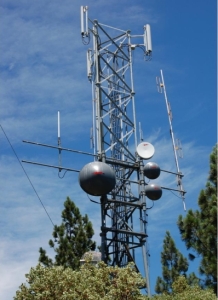
|
Recent Updates:
Check back soon for more PCB for Communications updates.
UPDATE: Monday, February 5th, 2024
PCB for Communications Project Makes Lasting Impact
Over 15 years and five project phases, the Professional Capacity Building for Communications project has addressed the critical need for a skilled rural ITS workforce. The overall goals of the project were to develop a comprehensive curriculum and conduct relevant training for rural ITS communications.
During the fifth and final phase of the project, the team researched and revised a comprehensive training curriculum for transportation communication systems that will build the professional capacity of rural intelligent transportation system (ITS) engineers and technicians. The project included a needs assessment working meeting and gap analysis, and the development and delivery of one training course. The principal deliverables of this project were the revised Curriculum Scope and Sequence, a Needs Assessment and Gap Analysis, an updated list of training providers, final materials from the training course, an evaluation of the training course, and a final report for project Phase 5.
You can read more about the working meeting needs assessment with Caltrans senior functional managers and subsequent gap analysis in the project update from February 9, 2023 and in the needs assessment report. Overall, the group confirmed that training for ITS data communications is important and of priority, now and in the future. Several of the higher priority needs for ITS data communications training are currently being met with the existing PCB courses. However, potential gaps open with challenges securing qualified subject matter experts to deliver on-site courses. The courses that have been developed and delivered through the project are perceived as useful, while the subjects and topics in the Curriculum reflect the state of the practice regarding ITS data communications.
One of the first questions asked participants to rank their training needs in the six core subject areas. IP Fundamentals was identified as the top priority for training based on current and future project load: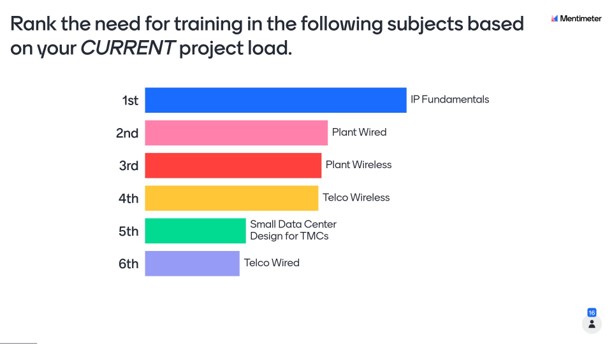
Results shown in Mentimeter
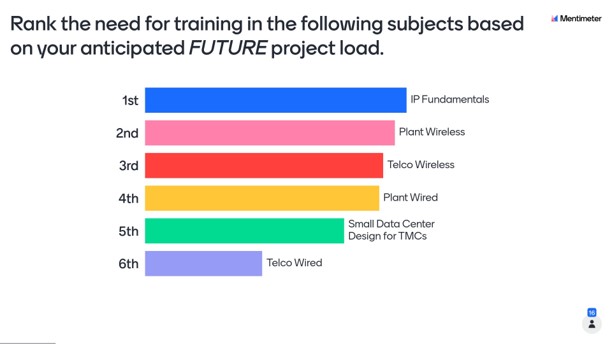
Results shown in Mentimeter
To move the conversation beyond the bounds of the established Curriculum and document any training needs that may not already be included, the group was asked to list their three most important training needs relative to ITS data communications. These could be topics in the Curriculum or any that could be added. The group produced a word cloud representing their answers (figure below). Larger words/phrases were mentioned more often.
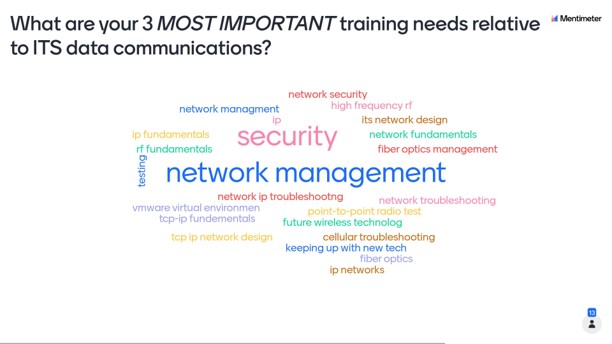
Results shown in Mentimeter
After the Needs Assessment, the project focused on developing and procuring a training course in RF Fundamentals. A formal limited solicitation process was conducted to secure an appropriate training provider and deliver a course in Radio Frequency (RF) Fundamentals Training. Jonathan David from Aviat Networks delivered 40 hours of training over five days. The course was well received with many positive comments from the students and Project Technical Advisory Panel (PTAP). Read more about the course and its content and see a few pictures in the project update (November 2, 2023).
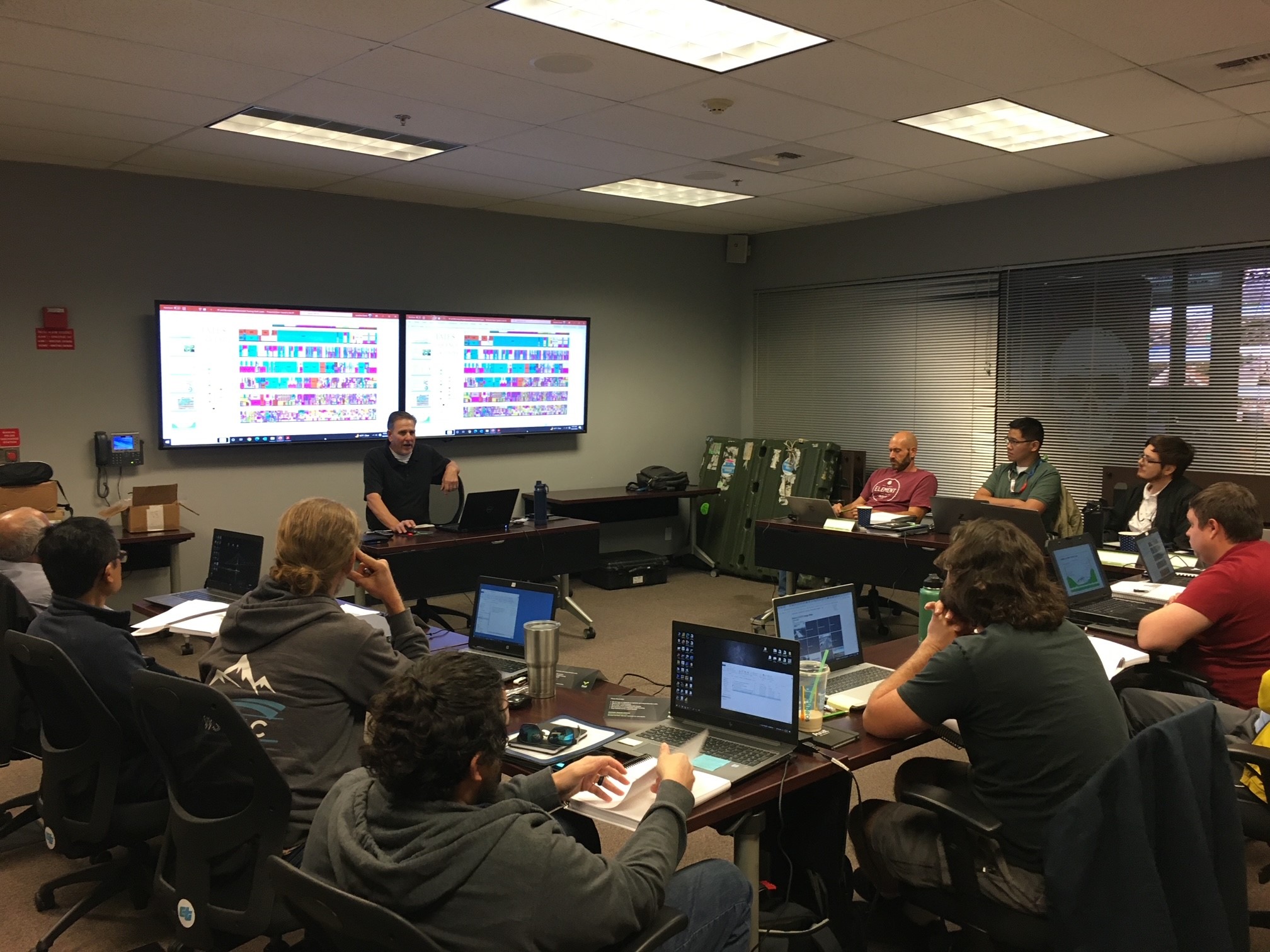
Photo by Sean Campbell
Based on the needs assessment, gap analysis, and the training course delivery and evaluation, the project team revised and enhanced the Curriculum Scope and Sequence. The curriculum consists of six major subjects: Plant Wireless, Telco Wireless, Plant Wired, Telco Wired, Internet Protocol (IP) Fundamentals, and Small Data Center Design for Transportation Management Centers (TMC). During this project phase, the topics for Telco Wireless were condensed to combine legacy technologies and put more emphasis on later generation technology. The topic of 5G Wireless technology was added. The learning objectives for Network Security in the IP Fundamentals subject area were enhanced. And the topic of Serial Connectivity was removed from the Curriculum. Number of training days were adjusted accordingly.
Another aspect of this project was to update a develop a dynamic list of potential training providers. This list helped ensure that the limited solicitation request for bids (RFB) reached the largest possible pool of qualified training providers, and ultimately helped secure an excellent instructor considered an expert in the field. The research team also prepared alternative formats of this list to make it more user friendly and facilitate searches by subject matter. As companies and instructors come and go, this is a dynamic document and future work would necessarily include updating this list.
You can read the Phase 5 Final Report here. The Final Report, Curriculum Scope and Sequence, and Needs Assessment and Gap Analysis Report are also posted on the PCB for Communications documents page.
The PCB for Communications project has successfully accomplished its goals and established deliverables that will continue to have an impact into the future.
- Six different training courses have been developed and delivered. These courses have all been full weeklong trainings (40 hours) with a minimum of 25 percent of hands-on laboratory work/exercises and taught by a subject matter expert with real-world experience in the training content.
- Three needs assessments and gap analyses were conducted to develop the curriculum and maintain its relevancy. In addition, these assessments directed decisions on which courses to develop and procure initially as well as those that should be delivered again.
- This project established quality syllabi and identified experienced instructors. This streamlined the Caltrans processes for training procurement which in turn allowed more staff to be trained. The additional training has helped build the professional capacity of the Caltrans workforce relative to ITS data communications. The courses in Optical Fiber, Telco Wireless Fundamentals, and IP Fundamentals, have been directly procured by Caltrans, with similar content and the same instructors:
- IP Fundamentals – six additional courses
- Optical Fiber – six additional courses, two of which were adapted to target maintenance electricians.
- Telco Wireless Fundamentals – one additional course
- Based on the positive experience and feedback from the IP Fundamentals course(s), Caltrans contracted with the same vendor to develop and deliver an Advanced IP Networks / Protocols training. Four of these courses have been delivered.
- Close to 70 students have been trained through the six original courses developed and delivered through this project. An additional 244 students completed training through the courses that were repeated. These students came from around the state.
- The breadth of content covered in these training courses is extensive. At the same time, it is practical, timely, and relevant to Caltrans transportation systems.
The immediate and future impact of this project is evident in student comments and testimonials. You can read some of them on the PCB project impact page.
In summary, this project directed the development and evolution of a robust training curriculum that meets the needs of ITS engineers for professional capacity building in ITS communications. Technical, in-depth training courses taught by subject matter expert instructors have been delivered. These courses incorporate hands-on, practical, and relevant materials. The project has identified quality instructors and established content, process, and procedure for procuring additional training.
This project has been extremely successful in workforce development for mission critical skills in ITS communications. Its impact has been immediate and will last into the future.
Project Contacts:
Project Technical Advisory Panel (PTAP)
Caltrans Project Manager:
Sean Campbell, P.E.
Chief, ITS Special Projects Branch
Caltrans, Division of Research, Innovation,
and System Information
PO Box 942873
Sacramento, CA 94273-0001
(916) 387-5166
sean_campbell "at" dot.ca.gov
https://dot.ca.gov/programs/research-innovation-system-information
Caltrans Project Champion:
Jeremiah Pearce, P.E.
Chief, Office of ITS Engineering and Support
Caltrans District 2
1657 Riverside Drive
Redding, CA 96001
(530) 225-3320
(530) 225-3255 (fax)
jeremiah.pearce "at" dot.ca.gov
https://dot.ca.gov/caltrans-near-me/district-2
WTI Principal Investigator
and Course Coordinator:
Leann Koon
Research Associate
Systems Engineering, Development & Integration
Western Transportation Institute (WTI)
Montana State University - Bozeman
PO Box 174250
Bozeman, MT 59717-4250
(406) 994-7643
(406) 994-1697 (fax)
leann.koon "at" montana.edu
www.westerntransportationinstitute.org
Past WTI Principal Investigator:
Douglas Galarus
Assistant Professor
Department of Computer Science
Montana Tech
Museum 202
1300 West Park Street
Butte, MT 59701
(406) 496-4858
dgalarus "at" mtech.edu
https://cs.mtech.edu/
OVERVIEW |
HISTORY |
CONTACTS |
UPDATE |
ARCHIVED UPDATES |
DOCUMENTS |
FACT SHEET |
PHASE 4 FACT SHEET |
IMPACT







